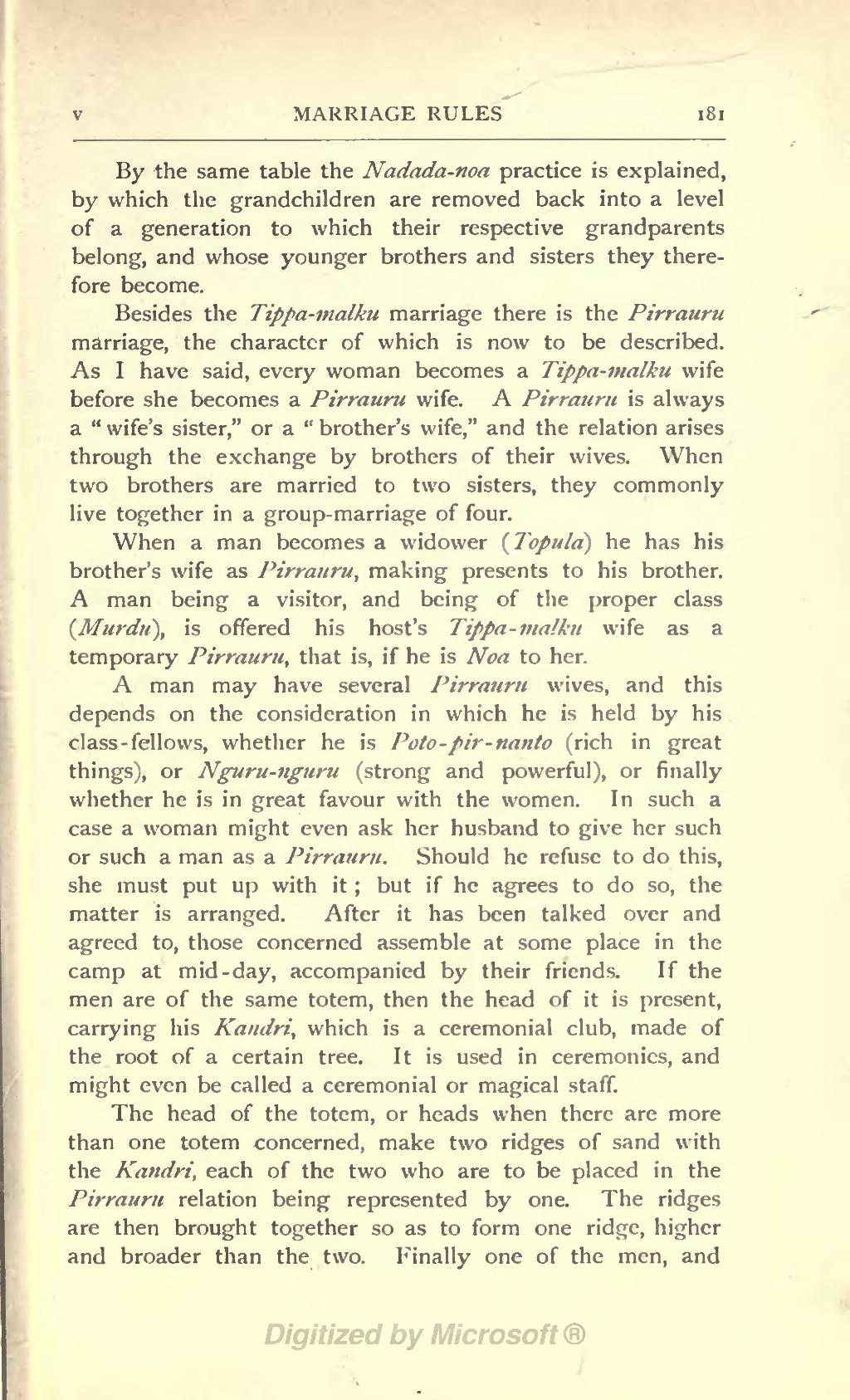By the same table the Nadada-noa practice is explained, by which the grandchildren are removed back into a level of a generation to which their respective grandparents belong, and whose younger brothers and sisters they therefore become.
Besides the Tippa-malku marriage there is the Pirrauru marriage, the character of which is now to be described. As I have said, every woman becomes a Tippa-malku wife before she becomes a Pirrauru wife. A Pirrauru is always a "wife's sister," or a "brother's wife," and the relation arises through the exchange by brothers of their wives. When two brothers are married to two sisters, they commonly live together in a group-marriage of four.
When a man becomes a widower (Topula) he has his brother's wife as Pirrauru, making presents to his brother. A man being a visitor, and being of the proper class (Murdu), is offered his host's Tippa-malku wife as a temporary Pirrauru, that is, if he is Noa to her.
A man may have several Pirrauru wives, and this depends on the consideration in which he is held by his class-fellows, whether he is Poto-pir-nanto (rich in great things), or Nguru-nguru (strong and powerful), or finally whether he is in great favour with the women. In such a case a woman might even ask her husband to give her such or such a man as a Pirrauru. Should he refuse to do this, she must put up with it; but if he agrees to do so, the matter is arranged. After it has been talked over and agreed to, those concerned assemble at some place in the camp at mid-day, accompanied by their friends. If the men are of the same totem, then the head of it is present, carrying his Kandri, which is a ceremonial club, made of the root of a certain tree. It is used in ceremonies, and might even be called a ceremonial or magical staff.
The head of the totem, or heads when there are more than one totem concerned, make two ridges of sand with the Kandri, each of the two who are to be placed in the Pirrauru relation being represented by one. The ridges are then brought together so as to form one ridge, higher and broader than the two. Finally one of the men, and
